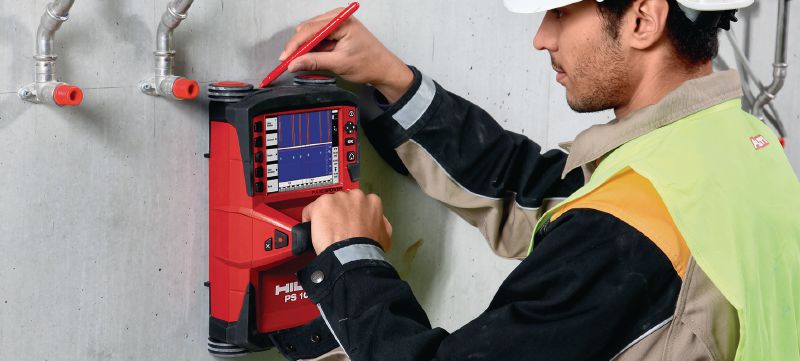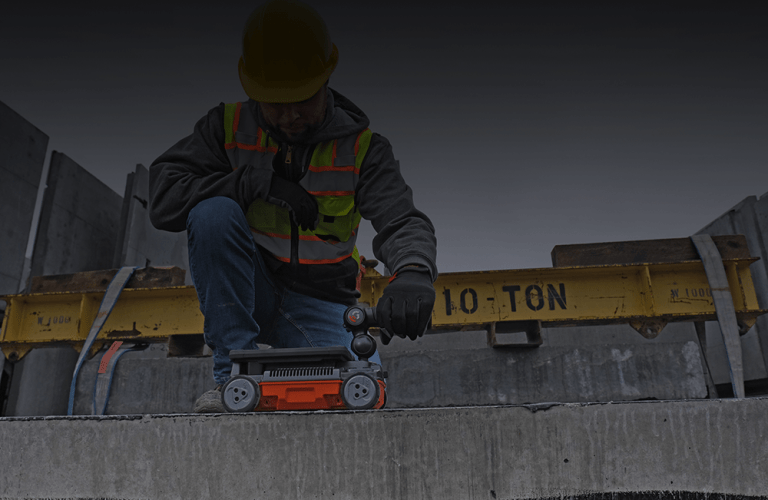Concrete Scanning: An Important Action Towards Making Certain Structural Integrity and Safety And Security
In the world of building and facilities upkeep, the relevance of concrete scanning can not be overemphasized. By utilizing sophisticated innovation and approaches, concrete scanning serves as a pivotal device in making certain that the integrity and safety and security of buildings and bridges are promoted to the highest requirements.
Significance of Concrete Scanning
Concrete scanning plays an important duty in making sure the architectural honesty and safety of structures and facilities jobs. By using innovative modern technologies such as ground-penetrating radar (GPR) and electro-magnetic induction, specialists can non-destructively examine concrete structures to detect possible flaws, voids, ingrained objects, and support design. This process allows very early discovery of abnormalities that can endanger the stability of a framework, protecting against expensive problems and ensuring the security of passengers.
Concrete scanning is particularly essential during the planning and building phases of a task. Before boring, reducing, or coring into concrete, scanning aids determine the accurate places of rebar, post-tension cable televisions, and other embedded components, lowering the threat of unintended hits that can lead to structural weaknesses. In addition, concrete scanning help in quality control by verifying the thickness of concrete covers and discovering any type of inconsistencies that might influence the general durability of the structure. Ultimately, buying concrete scanning services is not only an aggressive measure to minimize dangers however additionally an essential step in the direction of keeping the lasting safety and security of structures and infrastructure.
Innovation for Concrete Evaluation

Benefits of Early Detection
Timely detection of structural problems can dramatically mitigate threats and ensure the durability of building and construction tasks. By recognizing possible issues early in the construction procedure, stakeholders can take aggressive actions to attend to issues before they escalate into bigger and extra pricey issues. One of the essential benefits of very early discovery is the avoidance of structural failings, which can posture significant safety and security dangers and lead to job delays and financial losses.
In addition, very early detection enables prompt repair services and maintenance, which can assist expand the life-span of the structure. By attending to concerns quickly, building and construction groups can prevent expensive fixings or also the requirement for premature substitute of structural parts. This positive method not just saves time and money yet likewise boosts the overall safety and security and durability of the building and construction task.
Furthermore, very early detection can boost task planning and decision-making by offering stakeholders with beneficial insights right into the problem of the structure. Equipped with this information, task supervisors can make enlightened choices pertaining to building products, methods, and timelines, leading to much more effective and efficient job end results.
Making Sure Structural Stability
Making sure the architectural stability of a building task is critical to its security and long life. Architectural security refers to the ability of a structure or infrastructure to maintain its form and function under different lots and ecological conditions. To achieve this, detailed assessment and monitoring of the framework are essential. Concrete scanning plays a critical duty in guaranteeing structural stability by finding possible issues such as spaces, delamination, or support deterioration that can endanger the honesty of the structure with time.
By making use of innovative scanning modern technologies like ground-penetrating radar (GPR) and electro-magnetic induction, building and construction experts can non-invasively examine concrete structures to identify areas of concern beneath the surface area. This positive approach enables the very early detection of weaknesses or issues, enabling punctual repair work or reinforcement go now to protect against structural failings.
Regular concrete scanning during various building stages and throughout the life process of a structure can aid preserve its stability, alleviate risks, and ensure the safety and security of residents. By prioritizing structural stability with concrete scanning, construction jobs can boost their durability and durability, inevitably adding to better security and durability.
Avoiding Critical Failures
Carrying out regular inspections, such as concrete scanning, can disclose covert defects like voids, fractures, or corrosion that can jeopardize the honesty of a structure. By using advanced scanning modern technologies like Ground Penetrating Radar (GPR) or Concrete X-ray, designers can non-destructively assess the problem of concrete and identify weak points that need reinforcement or fixing.

Verdict
To conclude, concrete scanning plays an essential role in making sure architectural honesty and security by using sophisticated innovation for early detection of prospective issues. This proactive approach aids avoid important failures and guarantees the security of structures. It is important to prioritize concrete inspection as a basic practice to shield the long life and security of buildings and facilities.
Concrete scanning plays an important function in guaranteeing the structural honesty and safety and security of structures and infrastructure projects. In addition, concrete scanning aids in top quality control by confirming the thickness of concrete covers and finding any discrepancies that may influence the general toughness of the structure. Concrete scanning plays a vital function in making certain structural security by discovering potential problems such as gaps, delamination, or reinforcement deterioration that might compromise the stability of the structure over time.

In conclusion, concrete scanning plays a crucial function in guaranteeing structural integrity and security by using innovative innovation for very early discovery of prospective problems.